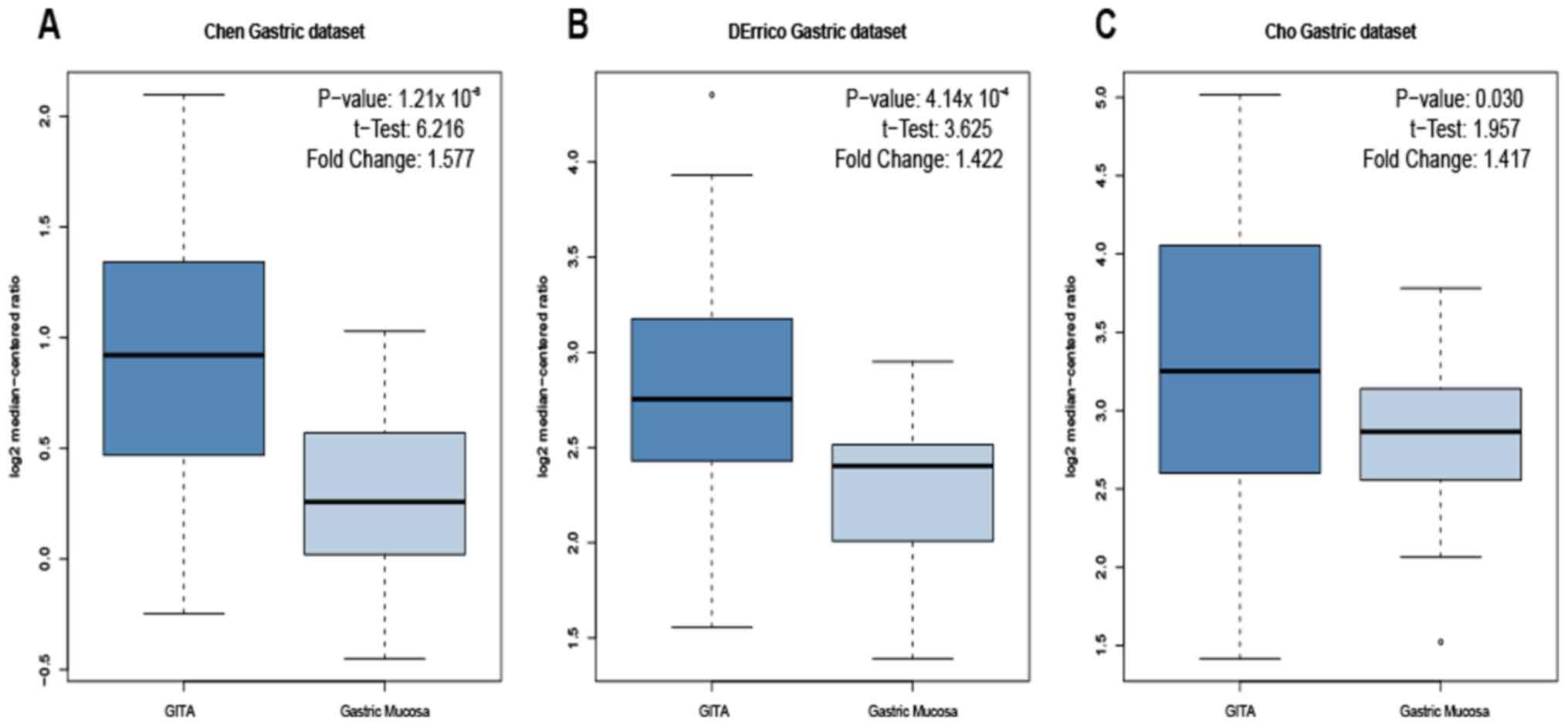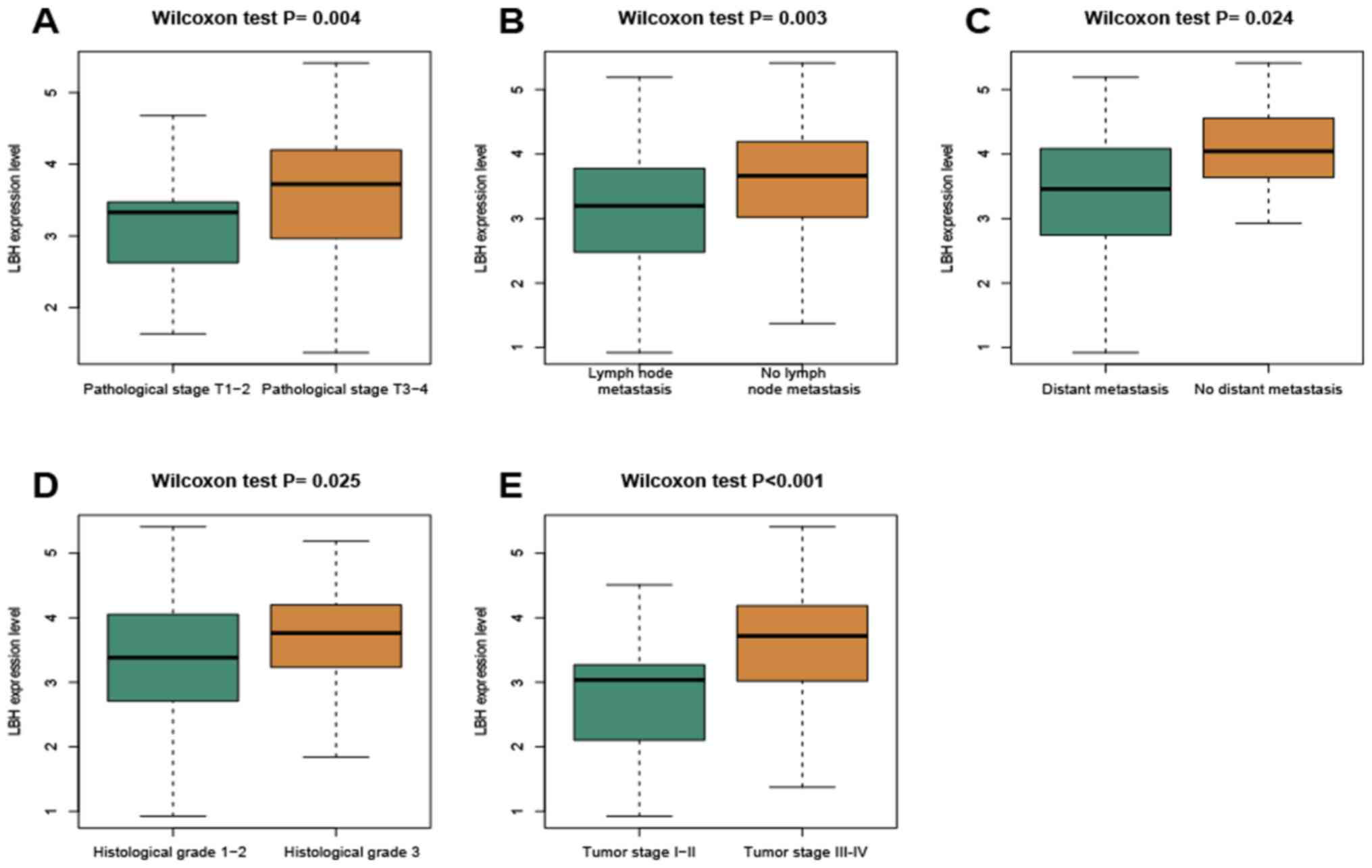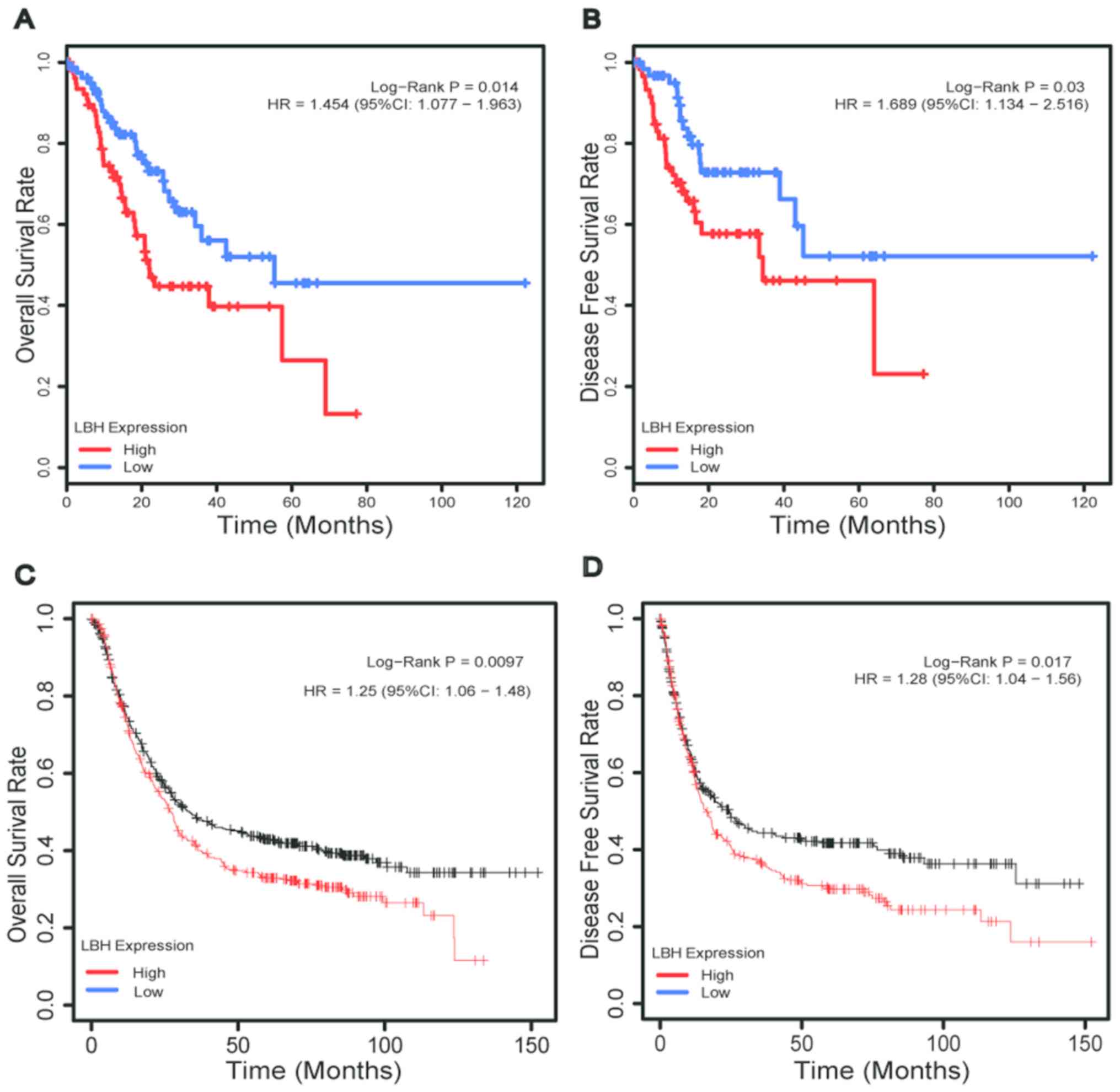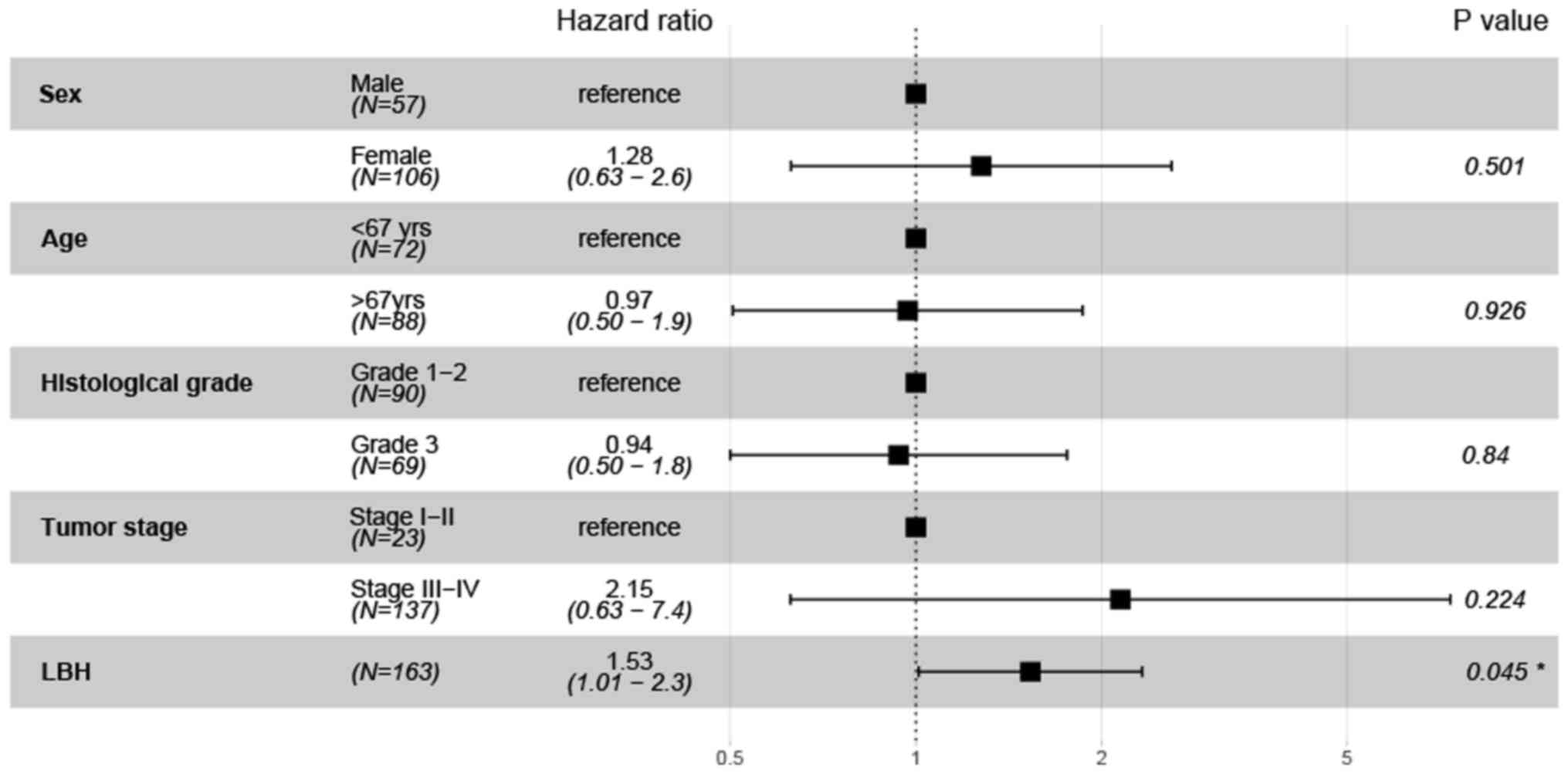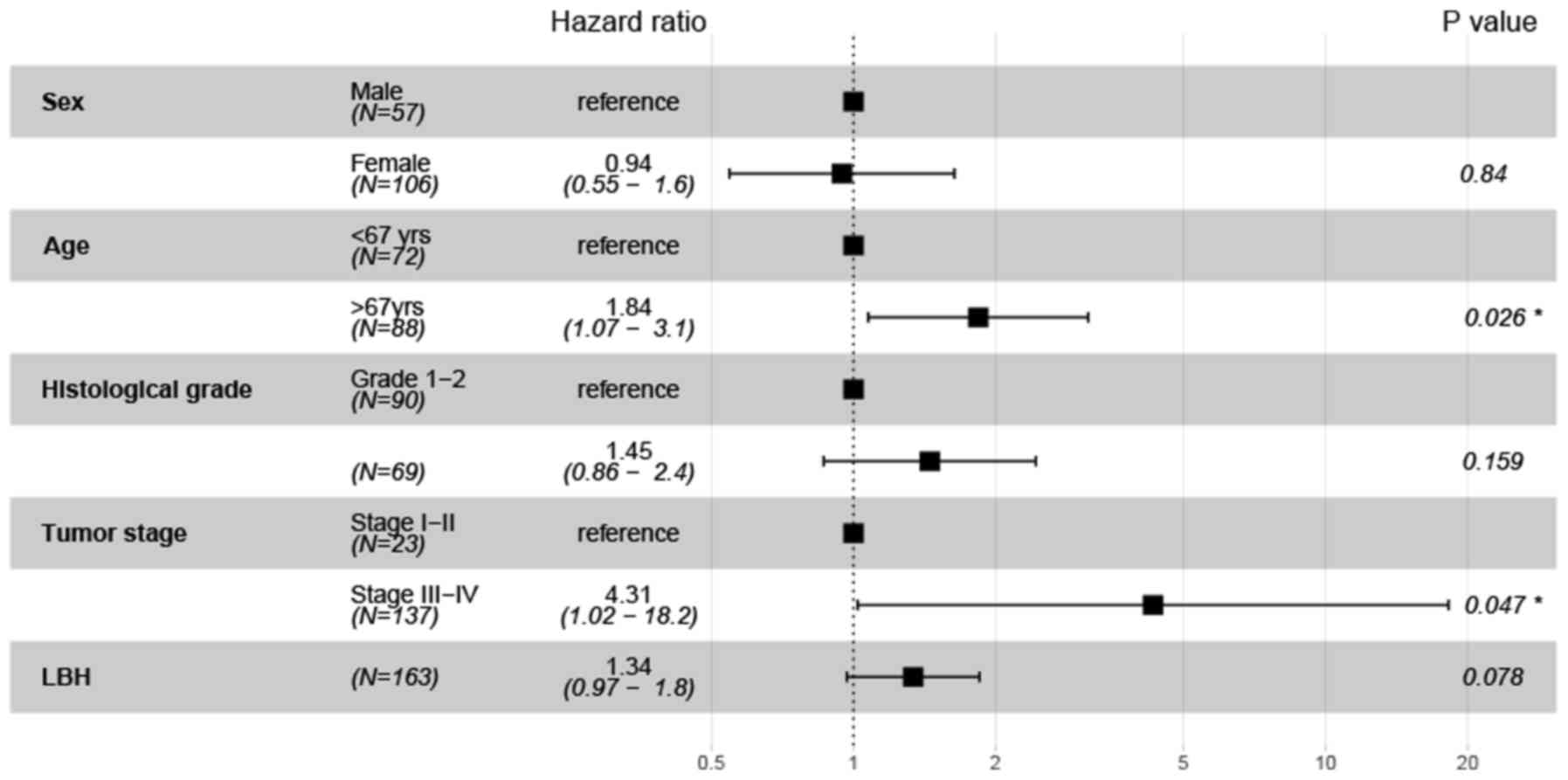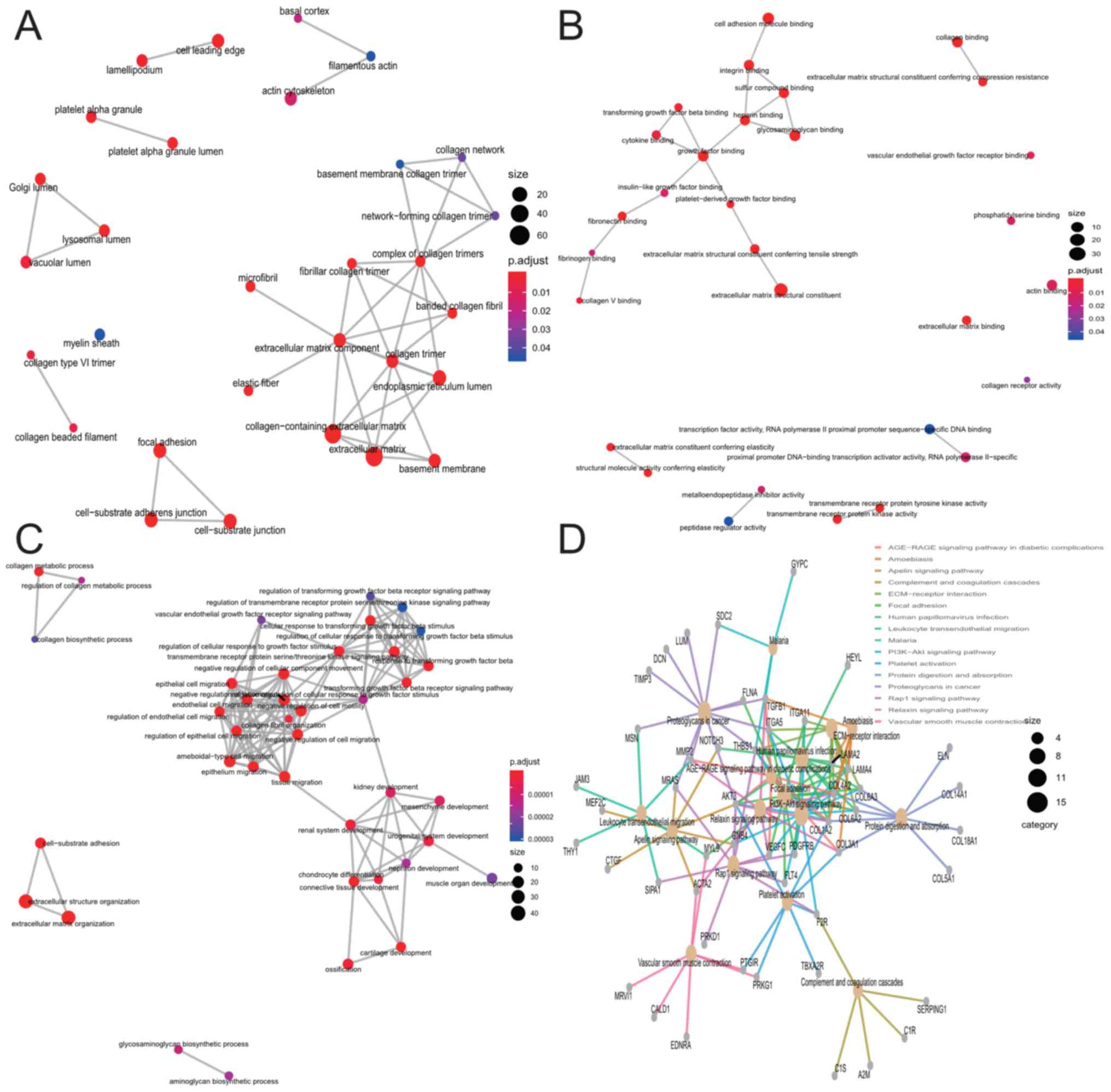|
1
|
Siegel RL, Miller KD and Jemal A: Cancer
Statistics, 2020. CA Cancer J Clin. 0:1–24. 2020.
|
|
2
|
Bray F, Ferlay J, Soerjomataram I, Siegel
RL, Torre LA and Jemal A: Global cancer statistics 2018: GLOBOCAN
estimates of incidence and mortality worldwide for 36 cancers in
185 countries. CA Cancer J Clin. 68:394–424. 2018. View Article : Google Scholar : PubMed/NCBI
|
|
3
|
Wadhwa R, Song S, Lee JS, Yao Y, Wei Q and
Ajani JA: Gastric cancer-molecular and clinical dimensions. Nat Rev
Clin Oncol. 10:643–655. 2013. View Article : Google Scholar : PubMed/NCBI
|
|
4
|
Ang TL and Fock KM: Clinical epidemiology
of gastric cancer. Singapore Med J. 55:621–628. 2014. View Article : Google Scholar : PubMed/NCBI
|
|
5
|
Lauren P: The two histological main types
of gastric carcinoma: Diffuse and so called intestinal type
carcinoma. An attempt at a histo clinical classification. Acta
Pathol Microbiol Scand. 64:31–49. 1965. View Article : Google Scholar : PubMed/NCBI
|
|
6
|
Figueiredo C, Costa S, Karameris A and
Machado JC: Pathogenesis of Gastric Cancer. Helicobacter. 20 (Suppl
1):30–35. 2015. View Article : Google Scholar : PubMed/NCBI
|
|
7
|
Park YH and Kim N: Review of atrophic
gastritis and intestinal metaplasia as a premalignant lesion of
gastric cancer. J Cancer Prev. 20:25–40. 2015. View Article : Google Scholar : PubMed/NCBI
|
|
8
|
Briegel KJ: Embryonic transcription
factors in human breast cancer. IUBMB Life. 58:123–132. 2006.
View Article : Google Scholar : PubMed/NCBI
|
|
9
|
Ben-Porath I, Thomson MW, Carey VJ, Ge R,
Bell GW, Regev A and Weinberg RA: An embryonic stem cell-like gene
expression signature in poorly differentiated aggressive human
tumors. Nat Genet. 40:499–507. 2008. View
Article : Google Scholar : PubMed/NCBI
|
|
10
|
Francis R, Guo H, Streutker C, Ahmed M,
Yung T, Dirks PB, He HH and Kim TH: Gastrointestinal transcription
factors drive lineage specific developmental programs in organ
specification and cancer. Sci Adv. 5:eaax88982019. View Article : Google Scholar : PubMed/NCBI
|
|
11
|
Raghoebir L, Bakker ER, Mills JC,
Swagemakers S, Kempen MB, Munck AB, Driegen S, Meijer D, Grosveld
F, Tibboel D, et al: SOX2 redirects the developmental fate of the
intestinal epithelium toward a premature gastric phenotype. J Mol
Cell Biol. 4:377–385. 2012. View Article : Google Scholar : PubMed/NCBI
|
|
12
|
Briegel KJ and Joyner AL: Identification
and characterization of Lbh, a novel conserved nuclear protein
expressed during early limb and heart development. Dev Biol.
233:291–304. 2001. View Article : Google Scholar : PubMed/NCBI
|
|
13
|
Rieger ME, Sims AH, Coats ER, Clarke RB
and Briegel KJ: The embryonic transcription cofactor LBH is a
direct target of the Wnt signaling pathway in epithelial
development and in aggressive basal subtype breast cancers. Mol
Cell Biol. 30:4267–4279. 2010. View Article : Google Scholar : PubMed/NCBI
|
|
14
|
Liu Q, Guan X, Lv J, Li X, Wang Y and Li
L: Limb-bud and Heart (LBH) functions as a tumor suppressor of
nasopharyngeal carcinoma by inducing G1/S cell cycle arrest. Sci
Rep. 5:76262015. View Article : Google Scholar : PubMed/NCBI
|
|
15
|
Deng M, Yu R, Wang S, Zhang Y, Li Z, Song
H, Liu B, Xu L, Wang X, Zhang Z, et al: Limb-Bud and heart
attenuates growth and invasion of human lung adenocarcinoma cells
and predicts survival outcome. Cell Physiol Biochem. 47:223–234.
2018. View Article : Google Scholar : PubMed/NCBI
|
|
16
|
Kruppa J and Jung K: Automated multigroup
outlier identification in molecular high-throughput data using
bagplots and gemplots. BMC Bioinformatics. 18:2322017. View Article : Google Scholar : PubMed/NCBI
|
|
17
|
Chen J, Hu B, Wang W, Qian XJ, Shan BJ and
He YF: A six-microRNA signature to predict outcomes of patients
with gastric cancer. FEBS Open Bio. 9:538–547. 2019. View Article : Google Scholar : PubMed/NCBI
|
|
18
|
Nagy Á, Lánczky A, Menyhárt O and Győrffy
B: Validation of miRNA prognostic power in hepatocellular carcinoma
using expression data of independent datasets. Sci Rep. 8:92272018.
View Article : Google Scholar : PubMed/NCBI
|
|
19
|
Jing JJ, Wang ZY, Li H, Sun LP and Yuan Y:
Key elements involved in Epstein-Barr virus-associated gastric
cancer and their network regulation. Cancer Cell Int. 18:1462018.
View Article : Google Scholar : PubMed/NCBI
|
|
20
|
Chen X, Leung SY, Yuen ST, Chu KM, Ji J,
Li R, Chan AS, Law S, Troyanskaya OG, Wong J, et al: Variation in
gene expression patterns in human gastric cancers. Mol Biol Cell.
14:3208–3215. 2003. View Article : Google Scholar : PubMed/NCBI
|
|
21
|
D'Errico M, de Rinaldis E, Blasi MF, Viti
V, Falchetti M, Calcagnile A, Sera F, Saieva C, Ottini L, Palli D,
et al: Genome-wide expression profile of sporadic gastric cancers
with microsatellite instability. Eur J Cancer. 45:461–469. 2009.
View Article : Google Scholar
|
|
22
|
Cho JY, Lim JY, Cheong JH, Park YY, Yoon
SL, Kim SM, Kim SB, Kim H, Hong SW, Park YN, et al: Gene expression
signature-based prognostic risk score in gastric cancer. Clin
Cancer Res. 17:1850–1857. 2011. View Article : Google Scholar : PubMed/NCBI
|
|
23
|
Kahn M: Can we safely target the WNT
pathway? Nat Rev Drug Discov. 13:513–532. 2014. View Article : Google Scholar : PubMed/NCBI
|
|
24
|
Clevers H and Nusse R: Wnt/β-catenin
signaling and disease. Cell. 149:1192–1205. 2012. View Article : Google Scholar : PubMed/NCBI
|
|
25
|
Ashad-Bishop K, Garikapati K, Lindley LE,
Jorda M and Briegel KJ: Loss of Limb-Bud-and-Heart (LBH) attenuates
mammary hyperplasia and tumor development in MMTV-Wnt1 transgenic
mice. Biochem Biophys Res Commun. 508:536–542. 2019. View Article : Google Scholar : PubMed/NCBI
|
|
26
|
Lindley LE, Curtis KM, Sanchez-Mejias A,
Rieger ME, Robbins DJ and Briegel KJ: The WNT-controlled
transcriptional regulator LBH is required for mammary stem cell
expansion and maintenance of the basal lineage. Development.
142:893–904. 2015. View Article : Google Scholar : PubMed/NCBI
|
|
27
|
Chen J, Huang C, Chen K, Li S, Zhang X,
Cheng J, Cai M and Xiao Y: Overexpression of LBH is associated with
poor prognosis in human hepatocellular carcinoma. OncoTargets Ther.
11:441–448. 2018. View Article : Google Scholar
|
|
28
|
Liu H, Wu N, Zhang Z, Zhong X, Zhang H,
Guo H, Nie Y and Liu Y: Long Non-coding RNA LINC00941 as a
potential biomarker promotes the proliferation and metastasis of
gastric cancer. Front Genet. 10:52019. View Article : Google Scholar : PubMed/NCBI
|
|
29
|
Lu Y, Li L, Wu G, Zhuo H, Liu G and Cai J:
Effect of PI3K/Akt signaling pathway on PRAS40Thr246
phosphorylation in gastric cancer cells. Iran J Public Health.
48:2196–2204. 2019.PubMed/NCBI
|
|
30
|
Hu M, Zhu S, Xiong S, Xue X and Zhou X:
MicroRNAs and the PTEN/PI3K/Akt pathway in gastric cancer (Review).
Oncol Rep. 41:1439–1454. 2019.PubMed/NCBI
|
|
31
|
Jia L, Zhu Z, Li H and Li Y: Shikonin
inhibits proliferation, migration, invasion and promotes apoptosis
in NCI-N87 cells via inhibition of PI3K/AKT signal pathway. Artif
Cells Nanomed Biotechnol. 47:2662–2669. 2019. View Article : Google Scholar : PubMed/NCBI
|
|
32
|
Zhang C, Lin X, Zhao Q, Wang Y, Jiang F,
Ji C, Li Y, Gao J, Li J and Shen L: YARS as an oncogenic protein
that promotes gastric cancer progression through activating
PI3K-Akt signaling. J Cancer Res Clin Oncol. 146:329–342. 2020.
View Article : Google Scholar : PubMed/NCBI
|
|
33
|
Liu Q, Li E, Huang L, Cheng M and Li L:
Limb-bud and heart overexpression inhibits the proliferation and
migration of PC3M Cells. J Cancer. 9:424–432. 2018. View Article : Google Scholar : PubMed/NCBI
|



